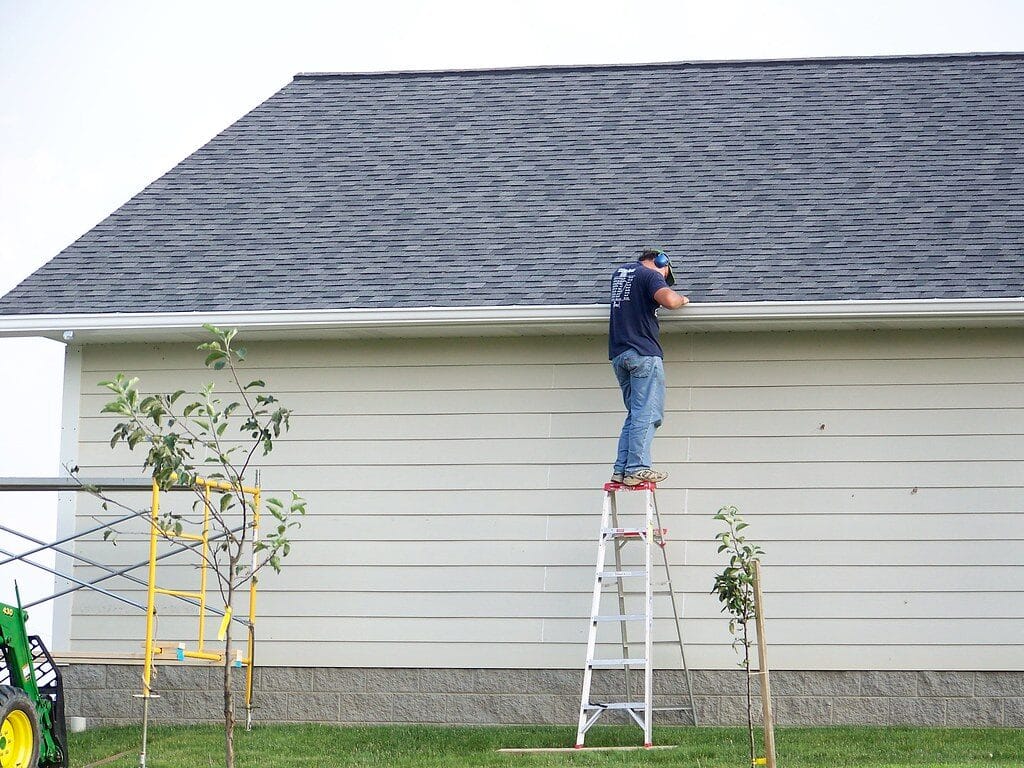The Ultimate Guide to Hanging Gutters by Yourself: Everything You Need to Know

Introduction
Gutters are an essential part of any home’s exterior, as they help to protect the foundation and prevent water damage. While many homeowners opt to hire professionals to install their gutters, there are benefits to hanging gutters by yourself. Not only can it save you money, but it can also give you a sense of accomplishment and pride in your home. This guide will provide you with step-by-step instructions on how to hang gutters by yourself.
Tools and Materials Needed
Before you begin, it’s important to gather all the necessary tools and materials. You will need a ladder, measuring tape, chalk line, hacksaw or tin snips, drill with screwdriver bits, gutter hangers, downspouts, elbows, sealant, and screws or rivets. When purchasing materials, make sure to choose high-quality gutters and hangers that are appropriate for your home’s size and style. It’s also important to measure the length of your roofline accurately to ensure that you purchase enough materials.
Preparing the Area
Before installing your gutters, it’s important to clear the area of any debris or obstructions that could interfere with the installation process. This includes removing any old gutters or downspouts and cleaning out any leaves or debris from the roofline. You should also inspect the area for any damage that may need to be repaired before installing new gutters.
Measuring and Cutting the Gutters
Once the area is prepared, it’s time to measure and cut your gutters to size. Start by measuring the length of your roofline using a measuring tape and chalk line. Then use a hacksaw or tin snips to cut the gutters to size. It’s important to make accurate cuts to ensure that your gutters fit properly.
Installing the Downspouts
Next, you’ll need to choose the location for your downspouts and cut the hole for them in your gutters. Make sure to choose a location that will allow water to flow away from your home’s foundation. Once you’ve cut the hole, attach the downspouts using elbows and screws or rivets.
Installing the Hangers
Choosing the right type of hangers is important for ensuring that your gutters are properly supported. There are several types of hangers available, including spike and ferrule hangers, strap hangers, and hidden hangers. Make sure to space your hangers appropriately to ensure that your gutters are properly supported.
Securing the Gutters
Once your hangers are in place, it’s time to attach your gutters to them. Make sure to align your gutters properly and use screws or rivets to secure them in place. It’s important to ensure that your gutters are properly aligned and secured to prevent water damage.
Sealing the Joints
To prevent leaks, it’s important to seal the joints between your gutters and downspouts using sealant. Apply sealant generously and make sure to smooth it out evenly.
Cleaning Up
After you’ve finished installing your gutters, it’s important to clean up any debris or materials left behind. Proper disposal of materials is also important for safety and environmental reasons.
Final Thoughts
Proper installation of gutters is essential for protecting your home from water damage. While hiring professionals can be expensive, hanging gutters by yourself can save you money and give you a sense of accomplishment. By following this guide, you can ensure that your gutters are properly installed and functioning as they should.
Conclusion
We encourage homeowners to try DIY installation of their gutters with this guide as a helpful resource. Remember to gather all necessary tools and materials, prepare the area, measure and cut the gutters accurately, install the downspouts and hangers properly, secure the gutters, seal the joints, and clean up after installation. Proper installation of gutters is essential for protecting your home from water damage and ensuring its longevity.






